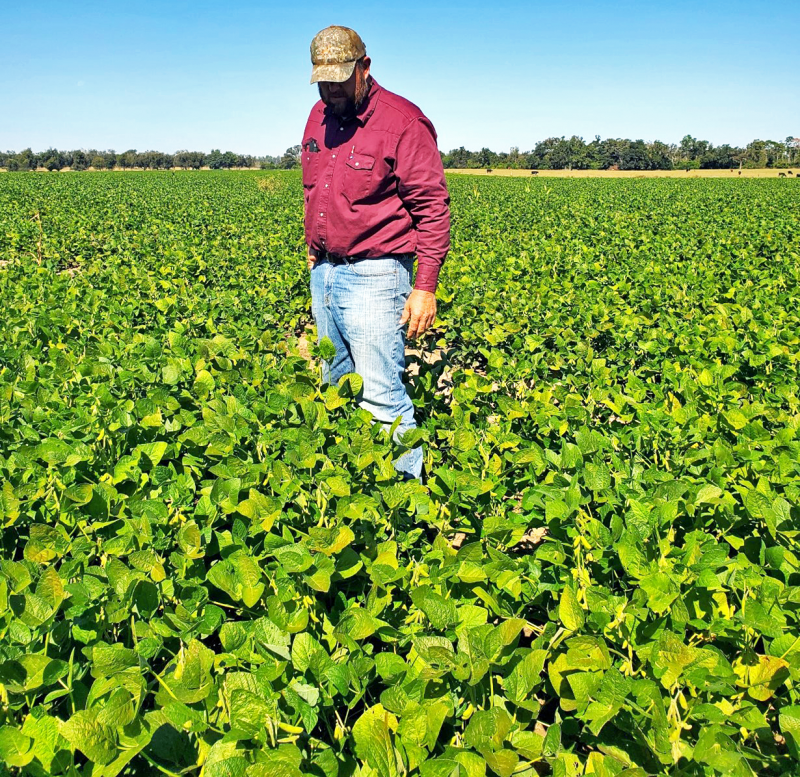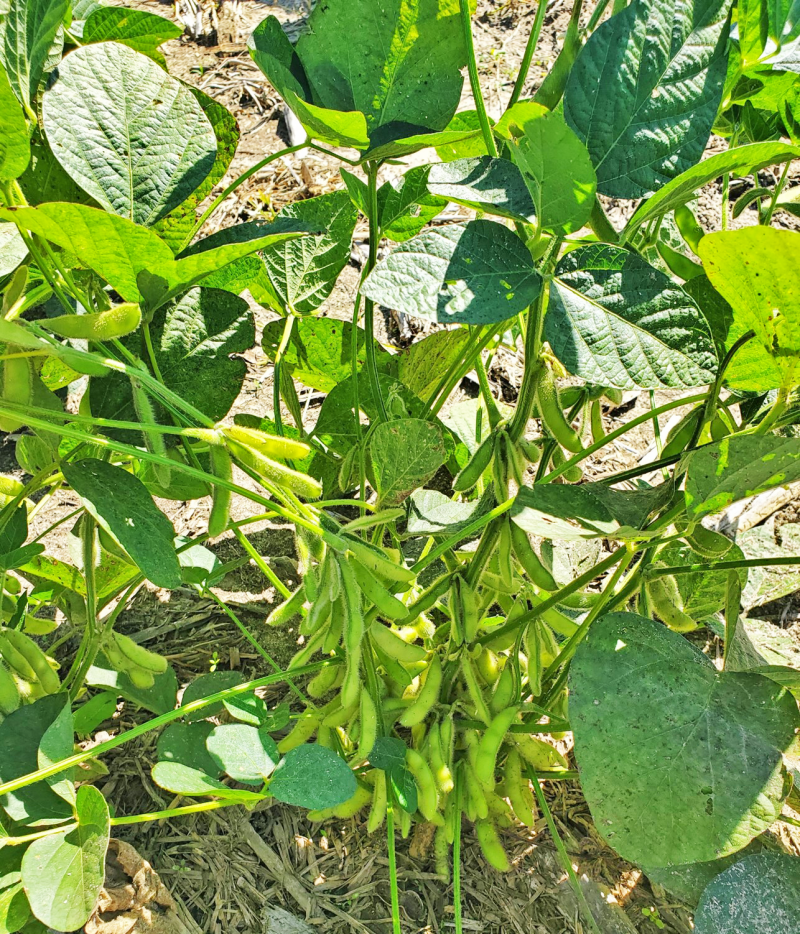
Figure 1. David Thomas (6’8″), NFREC Beef Unit Manager, evaluating the growth of a Forage Soybean Field just prior to October 27, 2022 harvest at NFREC Marianna. Credit: Nicolas DiLorenzo, UF/IFAS
Nicolas DiLorenzo, UF/IFAS Cattle Nutrition Specialist, NFREC Marianna
In an effort to cope with increasing feed prices, particularly protein supplements, researchers at the North Florida Research and Education Center (NFREC) began experimenting with alternative crops to harvest as silage. Forage soybeans are certainly not a new crop in our region, but with the development of new varieties, we decided it was time to re-evaluate its potential as an ensiled crop.

Figure 2. Large Lad forage soybeans (Eagle Seed Co.) ready to be harvested at NFREC, October 27, 2022. Credit: N. DiLorenzo, UF/IFAS
On July 23 of 2022, we planted 35 acres of irrigated land with forage soybeans (Large Lad, from Eagle Seeds Co.) following a corn crop that was harvested in mid-July as whole-plant silage. Seeds were drilled directly into the corn residue, and were fertilized with 100 units of potash, 40 units of P, and 60 units of N per acre. Later into the crop, two separate spray applications of boron were made, an herbicide (glyphosate) and an insecticide (Besiege, Syngenta) for the control of worms. Including all those inputs described, plus seed cost ($38/acre), planting and scouting, the total cost of planting forage soybeans in 2022 was $343/acre. On October 27, 2022, we harvested 6 tons of greenchop silage per acre; thus, the cost of the crop only, was $57/ton. Total harvest costs were $34/ton and included mowing, chopping and bagging (12-feet diameter bag 84 feet long). The total harvest from the 35 acres was 210 tons of forage soybeans with 36.7% dry matter. Adding the cost of growing the crop plus harvesting as silage, the total cost per ton of ensiled forage soybeans was $91/ton as fed, or $249/ton of dry matter.
–
Nutritive value
When tested in a commercial laboratory after more than 90 days of ensiling, the analysis showed that the forage soybeans had (on a dry matter basis): 18% crude protein, 8.9% crude fat, 3.4% starch, 30.2% NDF, 27% ash, and 57% TDN. These last two values were a bit surprising. It is possible that in an effort to harvest most of the pods in the plant, the cutting height was set too low, harvesting quite a bit of soil in the process. That may be the best explanation for the diluted energy of the crop and the high ash content. However, in most cases, it is rare to see soybean silage exceed 60% TDN on a dry matter basis.
–
Lessons Learned
Learning from our lessons in this first experience using forage soybeans silage at NFREC, a few recommendations emerge:
- If possible, plant earlier than late July to maximize harvest yield
- Research careful the best variety to plant. There are many options on the market and differences in germplasm that can greatly impact crop performance
- Adjust the cutting height to avoid harvesting soil and diluting the energy
- Harvest when the bottom leaves begin turning yellow to maximize yield and quality
- Use an inoculant designed for legumes to help in the fermentation and minimize losses, particularly during the feedout phase
–
Take Home Message
No doubt that $249/ton of dry matter is a large investment to do at one time. However, when considering that 77 tons of high-quality forage dry matter (18% CP, 8.9% fat) were harvested in one day from 35 acres, and without the need of feed storage facilities, certainly can make it an attractive proposition. This was not a research study but rather a simple field trial to evaluate the potential of this forage resource. Future research studies need to be conducted to assess optimal planting dates, fertilization rates, production timing to maximize yields and quality, and evaluating cost of production. Much room for improvement exists before wide-scale use of ensiled forage soybeans is recommended for cattle operations. In the context of high protein supplement costs, however, this option certainly needs further consideration.
- 2025 Florida Bull Test Sale Sets Average Price Record - March 7, 2025
- 2025 Florida Bull Test Sale – January 18 - January 10, 2025
- Intake Limiters:Old Technology for Modern Beef Cattle Supplementation - September 20, 2024
